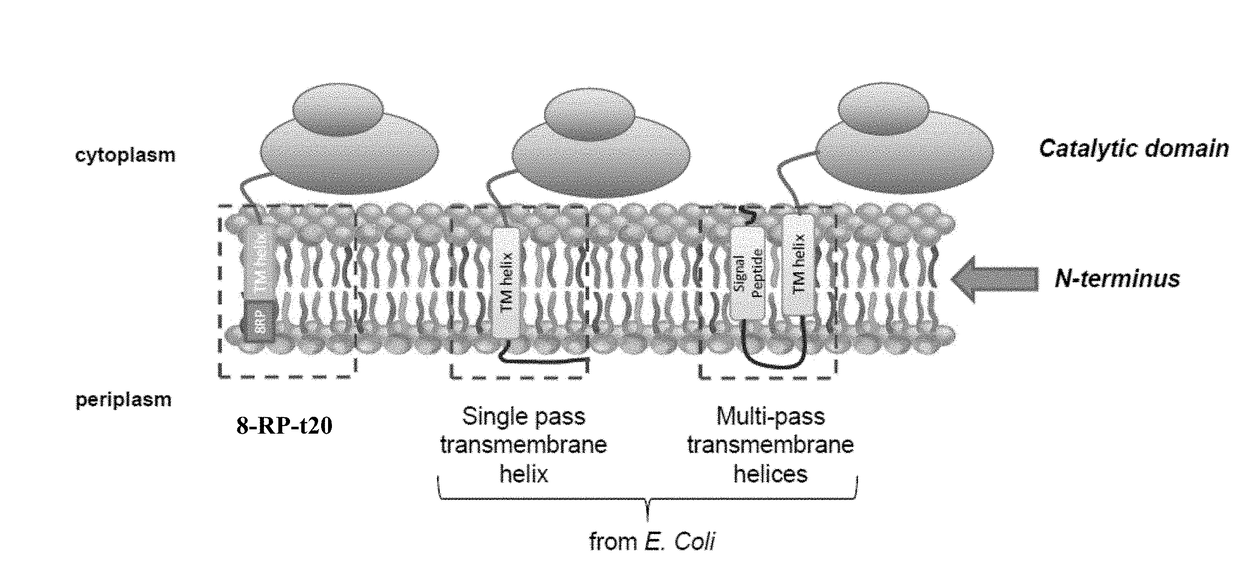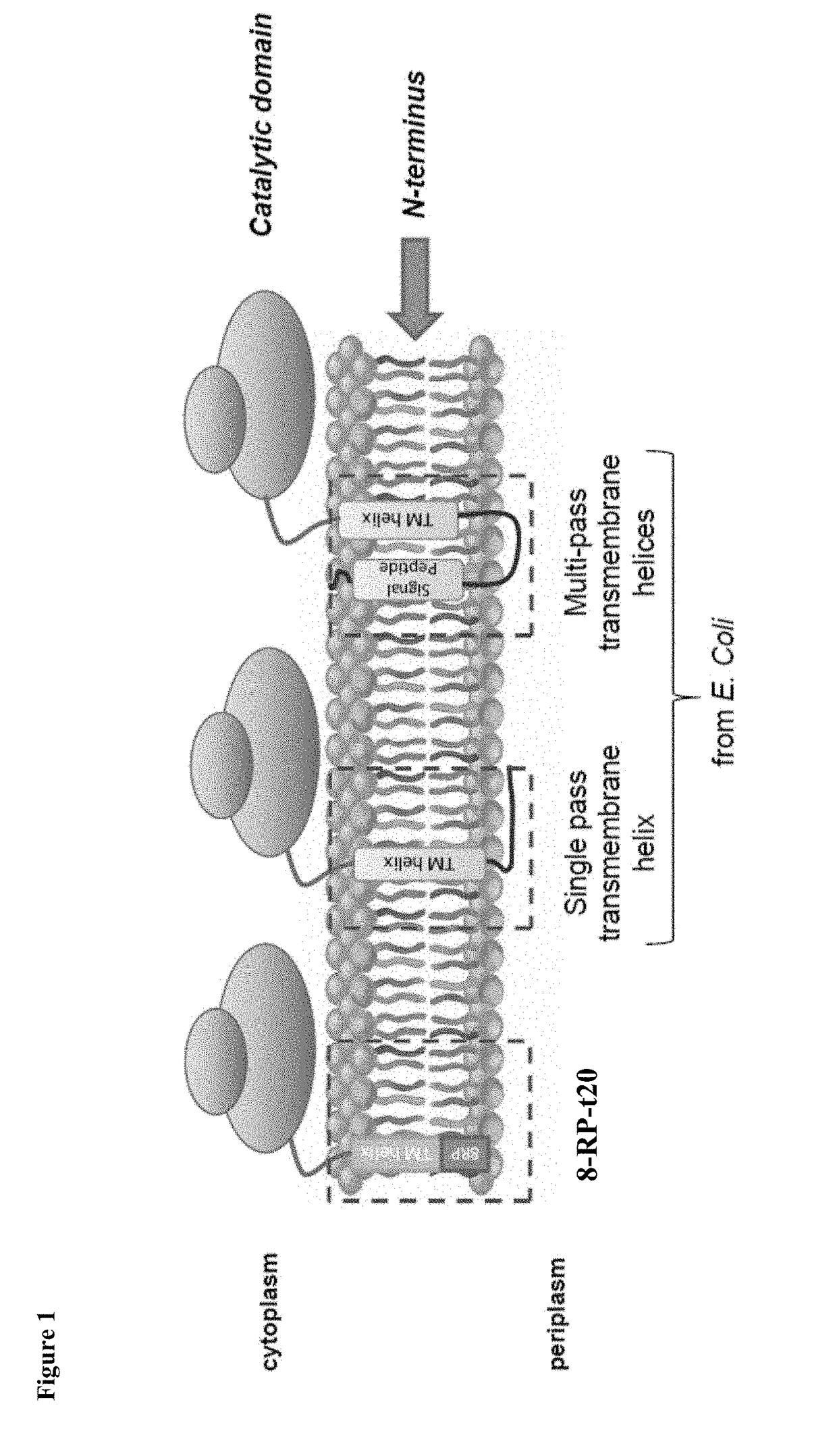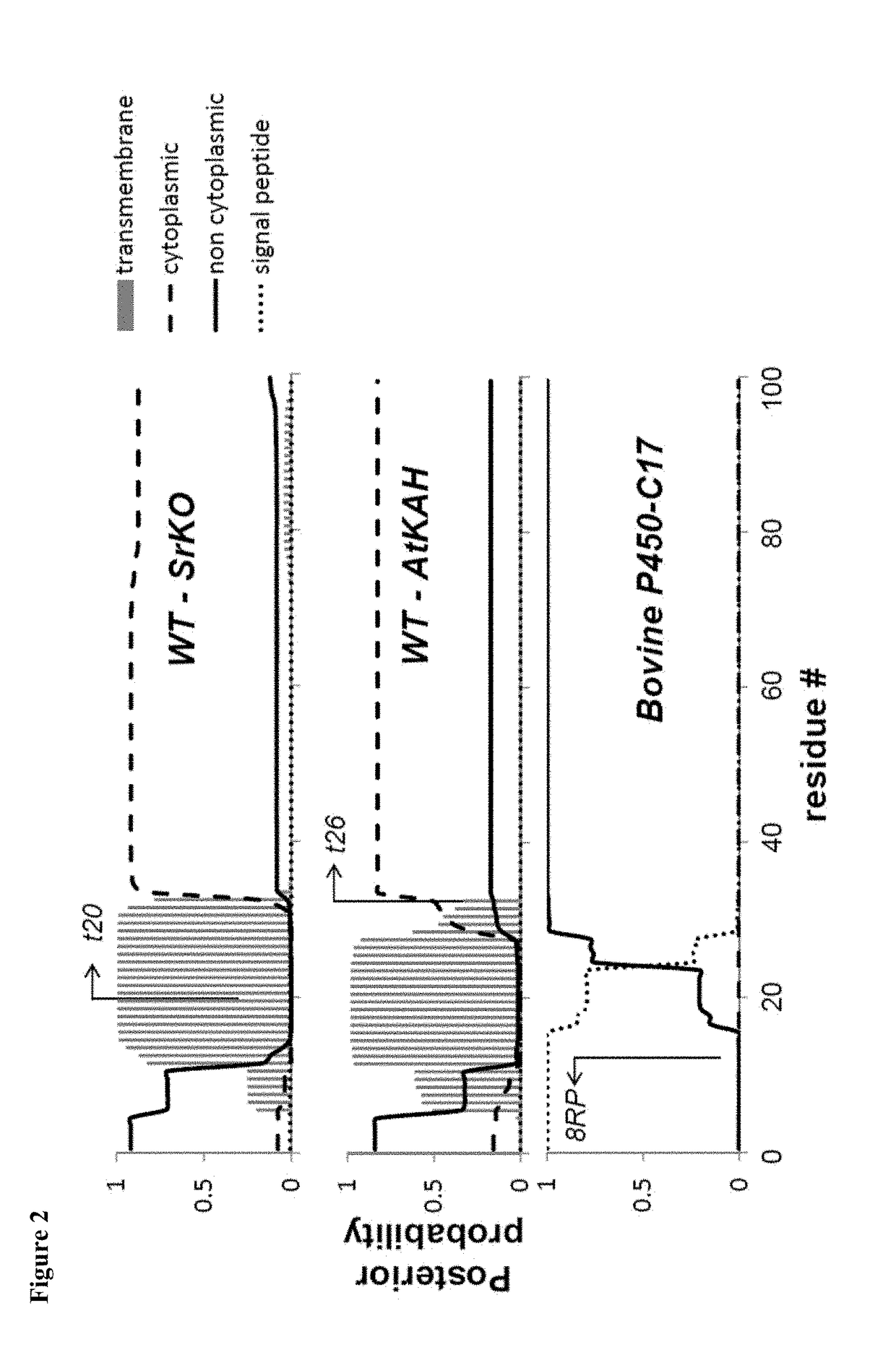Increasing productivity of e. coli host cells that functionally express p450 enzymes
a technology of p450 enzymes and host cells, which is applied in the direction of oxidoreductases, enzymes, biochemical equipment and processes, etc., can solve the problems of limiting the productivity of the host cell and the substantial stress response, and achieve the effect of limiting productivity, reducing stress response, and reducing stress
- Summary
- Abstract
- Description
- Claims
- Application Information
AI Technical Summary
Benefits of technology
Problems solved by technology
Method used
Image
Examples
example 2
Construction and Functional Analysis of Engineered Valencene Oxidase (VO) Enzymes
[0088]Various N-terminal anchors based on single pass E. coli transmembrane regions were constructed and incorporated into Valencene Oxidase (VO) truncated at residue 30. The Valencene Oxidase is derived from Stevia rebaudiana Kaurene Oxidase (SrKO), which has been shown to be functional for oxidative transformation of Valencene to Nootkatone and Nootkatol, which are sesquiterpene compounds. Constructs were cloned into the p5Trc-tc-CPR plasmid which includes a translationally coupled cytochrome P450 reductase (CPR). As a control, the 8rp signal peptide was also incorporated into VO truncated at either residue 20 or residue 30 (8rp-t20 or 8rp-t30).
[0089]The engineered VO enzymes with candidate E. coli anchor sequences were expressed in host E. coli cells that produce valencene through a recombinant valencene synthesis pathway. The cells were incubated at 30° C. for 48 hours in 96 dispensing well plates w...
example 3
Construction and Functional Analysis of Additional Engineered P450 Enzymes
[0096]Modified Arabidopsis thaliana kaurenoic acid 13-hydroxylase (AtKAH) and Stevia rebaudiana Kaurene Oxidase (SrKO) enzymes with E. coli anchor sequences were generated.
[0097]Engineered enzymes were produced with the AtKAH enzymes truncated at position 26. The N-terminus of the truncated AtKAH enzyme is shown below:
t25 AtKAHHVYGRAVVEQWRt26 AtKAH VYGRAVVEQWR
The E(z) scoring system was used to guide truncation of the E. coli anchor sequence by similarity of scoring to the parent protein (FIG. 11). Eight combinations of E. coli anchored N-terminal segments and AtKAH truncation lengths were selected for in vivo screening.
[0098]E. coli membrane anchors (e.g., zipA, yhhm, and yhcB) were also incorporated into SrKO for production of kaurenoic acid in E. coli. The N-terminus of the truncated SrKO enzyme is shown below:
t29 SrVOFWYLKSYTSARRt30 SrVO WYLKSYTSARR
[0099]The constructs were cloned into the p5Trc plasmid wh...
PUM
| Property | Measurement | Unit |
|---|---|---|
| temperatures | aaaaa | aaaaa |
| temperature | aaaaa | aaaaa |
| chemical | aaaaa | aaaaa |
Abstract
Description
Claims
Application Information
 Login to View More
Login to View More - R&D
- Intellectual Property
- Life Sciences
- Materials
- Tech Scout
- Unparalleled Data Quality
- Higher Quality Content
- 60% Fewer Hallucinations
Browse by: Latest US Patents, China's latest patents, Technical Efficacy Thesaurus, Application Domain, Technology Topic, Popular Technical Reports.
© 2025 PatSnap. All rights reserved.Legal|Privacy policy|Modern Slavery Act Transparency Statement|Sitemap|About US| Contact US: help@patsnap.com



